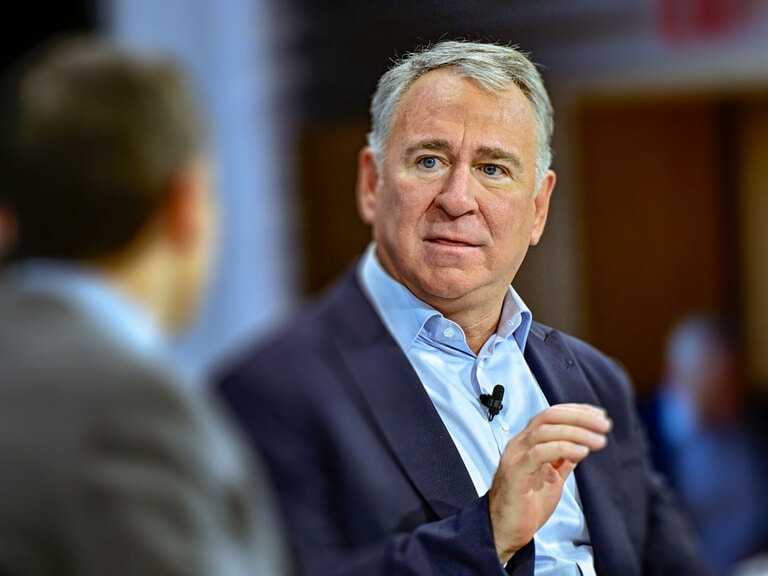The Sprott Junior Uranium Miners ETF’s top holdings are well-positioned to capture future growth within the uranium sector, but have underperformed in recent months. Despite this, improving nuclear sentiment has boosted uranium prices in the year so far, as well as the outlook for the fund’s top holdings.
- The Sprott Junior Uranium Miners ETF has underperformed other uranium-focused funds since its inception in February.
- Top holdings fail to impress despite high growth ambitions to capture growing uranium market share.
- Improved nuclear sentiment and rising uranium prices set to boost the outlook.
The Sprott Junior Uranium Miners ETF [URNJ] has slumped 23.9% since its inception on 1 February this year, but is up 6.2% in the past month.
The ETF was launched by Sprott Asset Management to track the performance of small and mid-cap companies that operate within the uranium mining industry. At the same time as the fund, three other ETFs were launched that focus on energy transition materials.
Prior to this, another similar Sprott fund launched in late 2019, the Sprott Uranium Miners ETF [URNM], which has performed better this year, remaining flat year-to-date but rising 5.1% in the past month. While both ETFs have exposure to the uranium mining industry, the newer Sprott Junior Uranium Miners ETF solely holds companies with a market cap below $2bn, while the older Sprott fund holds 30.8% of its funds in companies with a market cap above $2bn.
This high exposure to small-cap and growth companies has negatively impacted the performance of the Sprott Junior Uranium Miners ETF in recent months, with these smaller growth shares tending to underperform in times of uncertainty.
Top holdings fail to outperform despite strong uranium ambitions
The fund’s top holding, NexGen Energy [NXE], makes up 12.44% of the total fund value as of 12 May. The Canadian miner has slumped 7.2% since the beginning of the year, despite jumping 12.3% in the last month on the back of strong uranium prices and positive financing news.
NexGen Energy remains in its development stage and is currently working on getting its Rook I uranium mine operational. On 1 May, the company announced it had drawn expressions of interest totalling more than $1bn in loans to finance the project. The company’s share price has increased 7.6% since the news.
The fund’s second-largest holding, Paladin Energy [PDN.AX], accounts for 12% of the fund’s total holdings, with shares in the company down 6.4% year-to-date and down 0.8% in the past month. Last year, the company announced it is planning to reopen the Langer Heinrich mine, in which it holds a 75% ownership stake. The mine was shut in 2018 due to unfavourable uranium prices, but operations are on track to reopen in 2024.
In Paladin’s Macquarie Australia Conference published in May, CEO Ian Purdy noted how the projected supply of uranium over the next few years would be unable to match projected demand. The company is aiming to redress this imbalance, with 55 reactors currently under construction; it is also hoped that the Langer Heinrich mine will be able to bridge some of the gap.
Improving nuclear sentiment pushed up uranium prices.
Rising energy insecurity and incentives to shift away from carbon-intensive energy generation have encouraged the world to reconsider nuclear power.
In the EU, for example, nuclear power leader France has been vigorously arguing that nuclear could help achieve lower emissions while protecting the EU’s energy independence. Improved sentiment has helped to raise the price of uranium approximately 9.5% since the beginning of the year, according to Trading Economics.
In this light, analysts are positive about NexGen Energy, the fund’s top holding. Of seven analysts polled by the Refinitiv, two gave ‘buy’ ratings while the remaining five believed that shares would ‘outperform’. One analyst gave an average 12-month price forecast of $4.98, a 21.2% increase from the most recent closing price of $4.11.
Out of six analysts covering Paladin Energy shares, two gave ‘buy’ ratings, three believed shares would ‘outperform’, and the remaining analyst rated them ‘underperform’. The average 12-month price forecast from these analysts is $1.01, which represents a 53.9% premium on the most recent closing price of A$0.66.
Continue reading for FREE
- Includes free newsletter updates, unsubscribe anytime. Privacy policy





